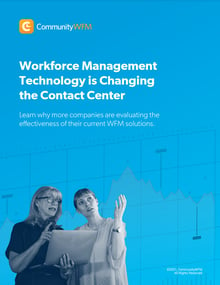
Creating a consistently accurate demand forecast for your contact center isn’t easy. It’s arguably one of the most difficult tasks a workforce management (WFM) analyst faces when doing their job.
But what happens when a forecast goes wrong? Is it always the fault of the WFM analyst and should they take all the blame for being over or understaffed? Not necessarily. Below are a few tips to help contact centers understand when and how to assign blame when it comes to forecasting errors.
Repair and build strong lines of internal communication
Knowledge in the hands of a WFM analyst often equates to accuracy. Not knowing the full scale of a marketing event or an operations change can significantly throw off a contact center forecast. A different department can be blamed in this scenario because of poor communication, but their negligence still impacts your life negatively as a WFM analyst. To avoid this as much as possible, make it a point to schedule precise and cadenced time with key colleagues in different departments. By creating strong and direct lines of communication you will hopefully reduce the frequency of being caught off guard by forecasting errors.
Consider that you missed something while forecasting
Simply put, nobody is perfect and from time to time a seasonal pattern can be overlooked or an incorrect growth rate may be applied. If this happens, it’s important to own up to a mistake because you’ll gain the respect of colleagues for not trying to divert blame incorrectly. State what you’ve learned from the error and provide details around what changes have been made to your forecasting process so it doesn’t happen again. As long as this conversation occurs infrequently, a good boss will accept your response and everyone can move forward together from a self-created forecasting problem.
Sometimes there just isn’t a specific source to blame
One off events such as bad weather, system outages, and more can’t be predicted by anyone. In these situations there isn’t anyone to assign blame to because nobody is at fault. With this said, ensure you have practiced response scenarios to minimize the impact an unexpected event has on your incorrect forecast. Every type of event should be identified and a specific strategy should be built out for reacting appropriately. Once the strategies have been tested and finalized, they should be formally documented. Taking this additional step helps to put everyone at ease when an event does occur. It also provides your team with a framework to follow should you be out of office and unable to implement the strategy yourself.
In short, forecasts will never be right all the time. But knowing why and how a forecast went wrong can go a long way towards understanding the mistake (if there is one) and taking the right steps to ensure it doesn’t happen again. Having the right response strategies outlined and in place is valuable for minimizing the impact of forecasting errors, whether they are your fault or not, and helps to display control over an unexpected situation.








